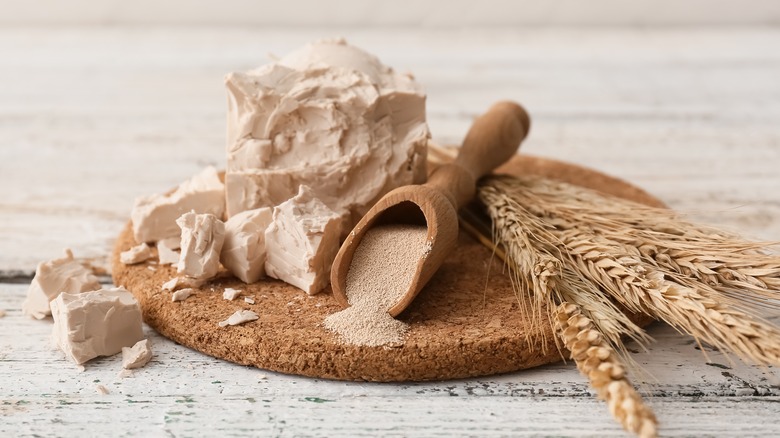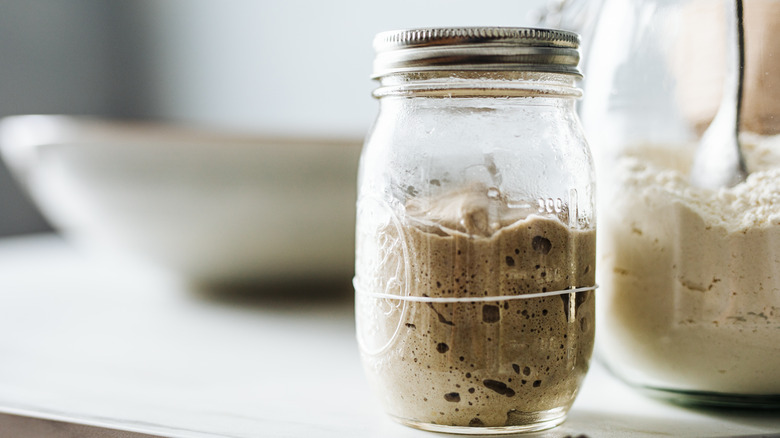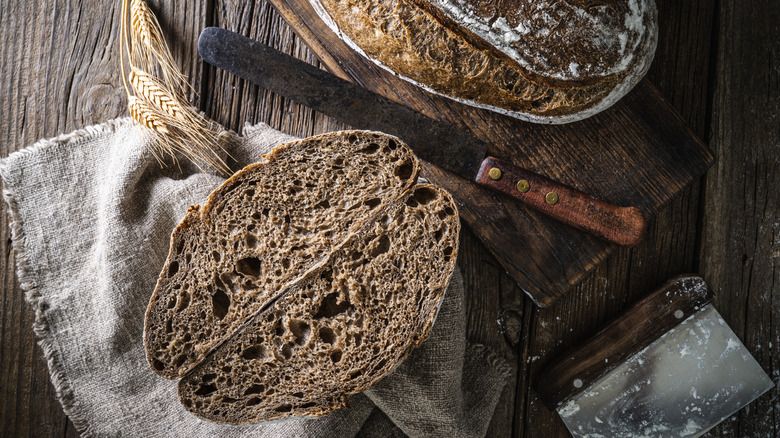Store Yeast In The Freezer To Keep It Fresh Exponentially Longer
Bakers, if you have individual packets of yeast tucked away in your kitchen cupboard, it's time to rethink the way you buy and store your yeast. For the best value, yeast can be purchased in jars and packages that weigh in at around a pound or more, rather than in little envelopes containing just a few teaspoons.
If buying larger quantities of yeast sounds intimidating, you can relax knowing that your freezer is here to help. Yeast properly stored in the freezer can last for six months to a year after the package has been opened. The cold temperature of the freezer will keep your yeast alive and in a healthy holding state until you're ready to bake. There are, however, differing schools of thought on whether you can use your yeast straight from the freezer or if you should allow it to warm to room temperature, so you may want to experiment with both options before your next big baking project.
How to store your yeast
Whether you opt to keep your yeast in the freezer or not, it is critical that it is stored in an airtight container, such as a glass jar or reusable food-grade silicone bag. This is important because it prevents exposure to air and moisture that can spoil the yeast. To make sure that you never accidentally use expired yeast — and to run your kitchen like the executive chef of a Michelin-starred restaurant or Carmy of the popular television series "The Bear" – you'll also want to label your container with a marker and piece of tape, indicating the date you first opened the package of yeast.
Keep in mind that there are different kinds of yeast, including active dry yeast, instant yeast, fresh yeast, nutritional yeast, and wild yeast (used for creating your own sourdough bread starter). Here, we're talking specifically about active dry yeast, which is most commonly used for home baking because it lends great taste and texture to simple bready doughs — and it's easy to store. Instant yeast should not be kept in the freezer until it's opened.
Make sure your yeast is alive and thriving
If a container of yeast is exposed to water, air, or high temperatures, the yeast cells can die. This can happen anywhere along the way from the location where the yeast was produced to your home kitchen, so if you have any doubts about the health of your yeast, you can do a quick test to check its freshness. It's always better to check before you bake, so you don't end up with a ruined pastry. Simply add a small amount of the yeast to a bowl of warm water with a pinch of sugar. Be sure that the water is less than 139 degrees Fahrenheit, which can kill the yeast.
This test is called "proofing," and you will know that the yeast is active if a foam forms on the surface after a few minutes. If your yeast does not form a foam when proofing, this means that the yeast has died and will not help your bread dough to rise to an ideal, airy consistency.



